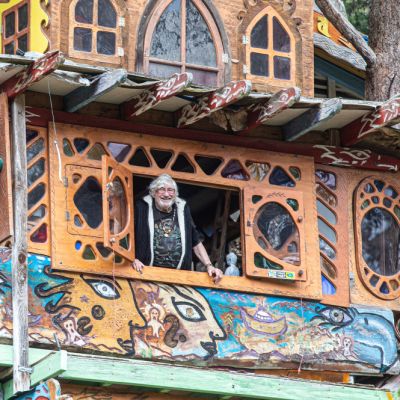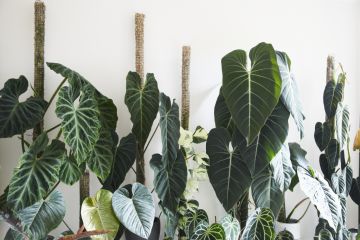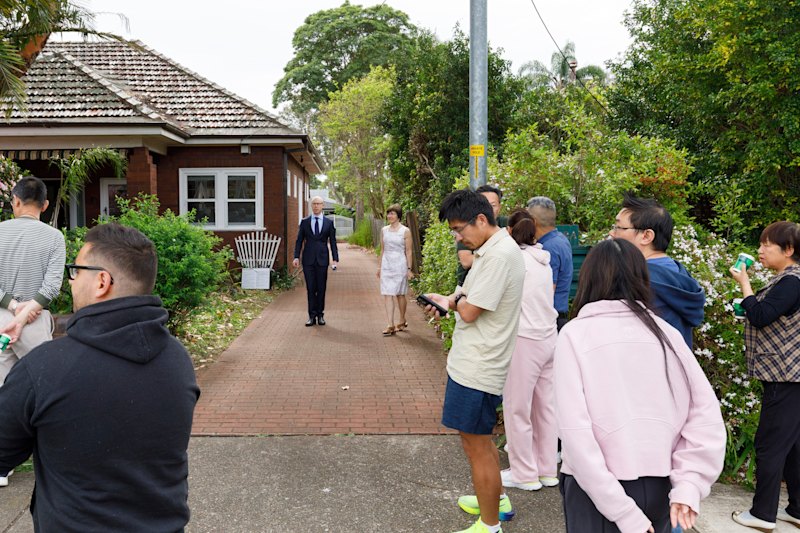'It functions like a normal house': The family of five living in a Mongolian yurt
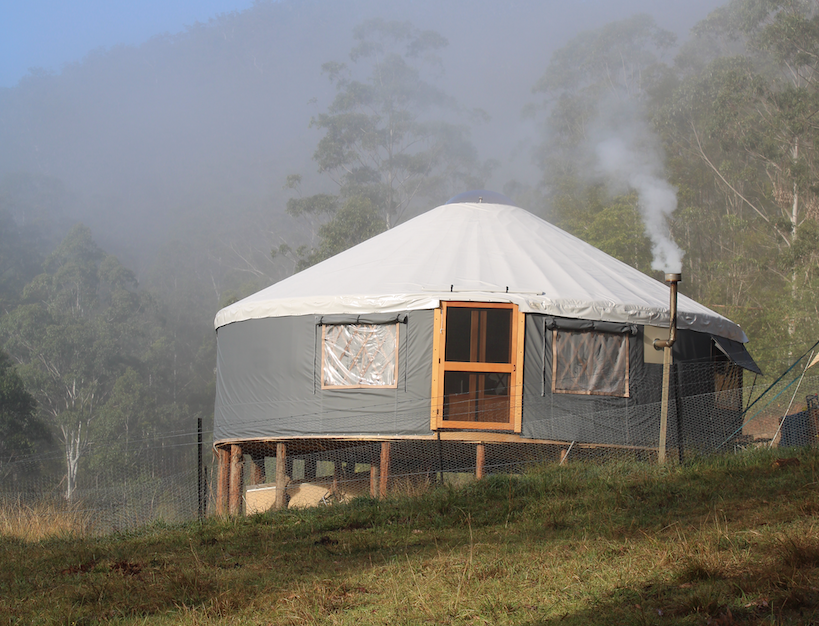
Grant Christian had a dream when he was four to be a farmer. Little did he know that 30 years later he would travel with his wife and three boys 2000 kilometres across the country to live in an off-the-grid Mongolian yurt.
The family bought 107 hectares of land, 45 minutes’ drive inland from Port Macquarie, NSW after Googling farmland for sale in Australia. They then packed up their trailer, said goodbye to their home in Hambly Bridge, South Australia and headed for the east coast.
“We looked around the whole of Australia at properties that fitted our criteria, half an hour from a big town, a minimum of 150 acres [60 hectares] and within our price range,” says Grant’s wife, Emma. “We wanted high rainfall, you can’t grow anything without rain, so that narrowed our search.”
Find out why Jane made a seachange at 25 on Domain’s podcast Somewhere Else:
When they arrived at the property in January this year, the family of five lived in a vintage caravan for three months while they waited for their yurt to arrive from the US.
They decided on a yurt after Googling different structures. “It gave us a functional building in the shortest space of time,” says Emma. The couple put the yurt up in under a week, as all the parts were pre-made.
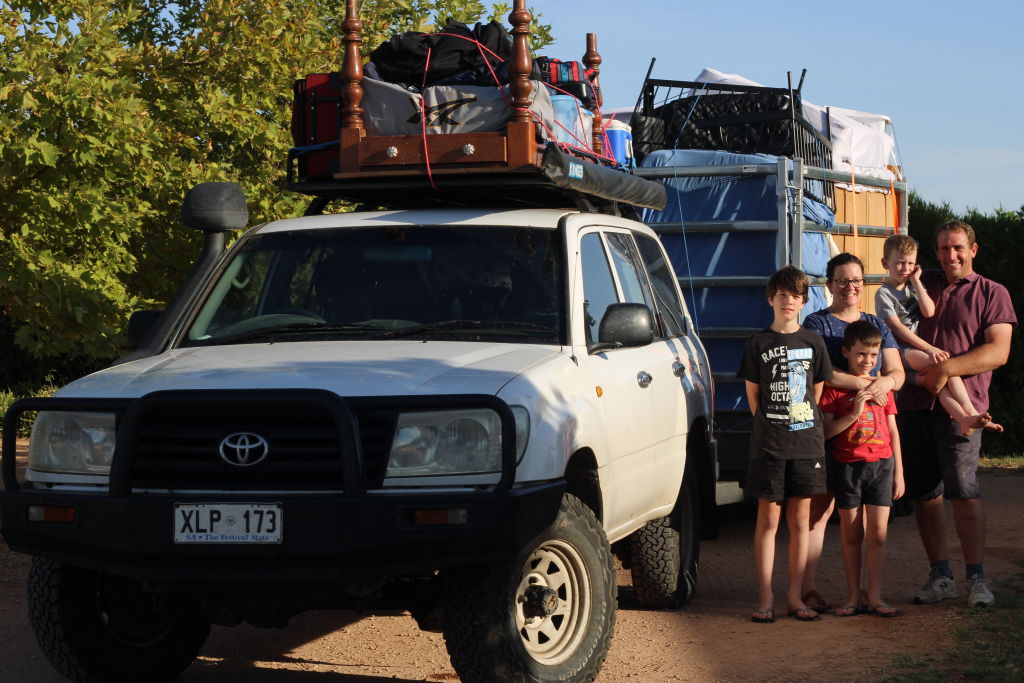
The structure has bamboo lattice on the inside and rafters that lead up to a circular window at the top.
Instead of the traditional Mongolian layers of felted wool, it’s made from NASA-developed reflective insulation. The skinned willow pole rafters in the roof have been replaced by stress-rated, kiln-dried Douglas fir. “We did upgrade to a wind and snow kit, we don’t really need the snow, but it gives us stronger beams against storms,” says Emma.
They have been living in the nine-metre diameter yurt for the past four months and have experienced a few frosty winter nights.
An Aga wood oven heats the yurt and, in the future, will heat their water as well. A Perspex dome window on the roof can be opened for ventilation and the flue directs smoke from the Aga out the side of the yurt. Currently, they use furniture to divide up the areas inside, but they plan on building dividing walls.
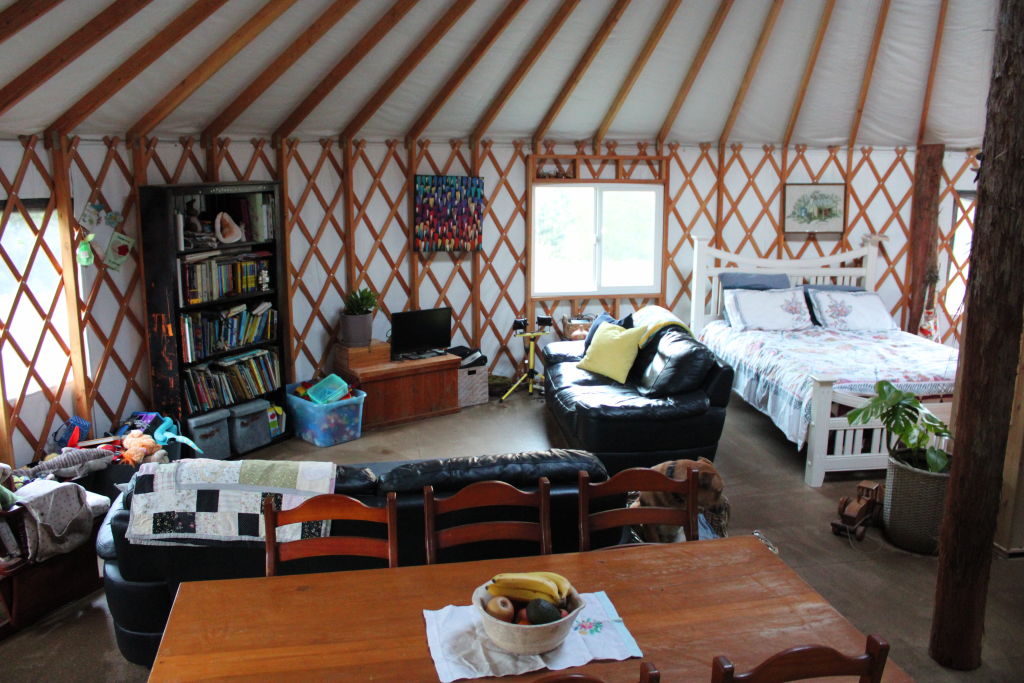
“It’s really nice at night, you can look out through the dome and see the stars. You can see the clouds move across the sky during the day, which is really pretty as well,” says Emma.
The 1.5-metre dome lets in a lot of light, but they also have 12V lights wired up from solar batteries.
The kids have adjusted to the change well. “They go out bushwalking, they try to catch things in the creek, they never catch anything, but it keeps them amused for hours. They have all sorts of adventures here,” Emma says.
The Christians don’t have TV reception, but they have internet via satellite.
“It’s such a massive thing [for the boys], to move across the country away from everyone you know, away from normal housing, where we were living and starting a new school.”
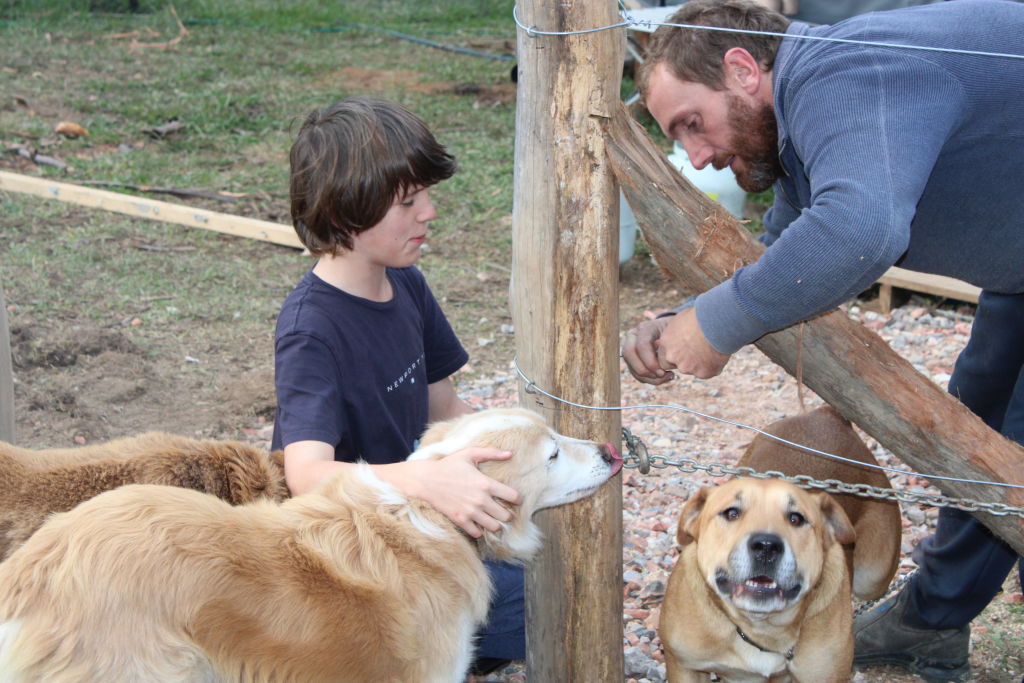
Their water supply is rainwater and they have a camp toilet until they build a composting toilet. The fridge is run by gas and their washing machine and power tools are run by a generator. They have a small solar set-up that powers their tablets and laptops.
Emma thinks living in a yurt feels more like a small unit, rather than a tent. “It’s an interesting building, it functions more like a normal house. We have doors and windows that open, we have this beautiful balance of nature. Simplicity and slowness as well.”
They plan to have cattle and goats and would like to grow as much of their own produce as possible. Emma loves baking, sewing and blogging about their simple life. The youngest boy, Harry just lost a tooth and wasn’t impressed with the tooth fairy, as she didn’t visit last night. “She couldn’t find the yurt,” says Emma.
We recommend
We thought you might like
States
Capital Cities
Capital Cities - Rentals
Popular Areas
Allhomes
More
- © 2025, CoStar Group Inc.
